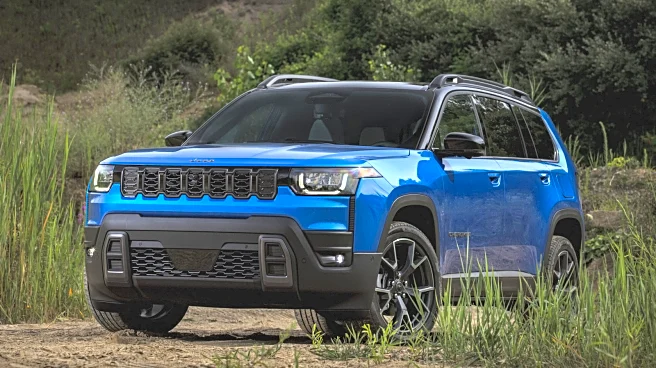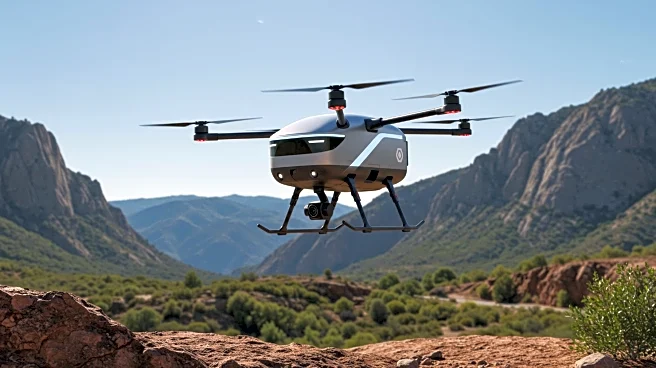
When Clessie Cummins founded the Columbus, Indiana-based Cummins Engine Company in 1919, it was built on a spirit of innovation that continues to thrive after more than 100 years. That innovative spirit has brought us several iterations of powerful Cummins diesel engines and now the company's first gasoline engine, the Cummins B6.7 Octane. The Cummins B6.7 Octane gasoline-powered engine, with an advertised 300 horsepower and 660 lb-ft of torque, can't match the power output of the high-output diesel engines available
in today's trucks. For example, the Next Generation Cummins 6.7 Turbo Diesel Pickup Engine System is rated at 430 hp and 1075 lb-ft of torque.
However, the turbocharged inline six-cylinder B6.7 Octane's 660 lb-ft of torque is substantially higher than that of Ram's 6.4 HEMI and Ford's 7.3 Godzilla engines. The 6.4 HEMI, for example, delivers 410 horsepower and 429 lb-ft of torque, while the larger displacement Godzilla engine has 430 horsepower, but still less torque than the Octane, with its torque output rated at 485 lb-ft. The new Cummins B6.7 Octane isn't intended to compete directly with the Next Generation Cummins 6.7 Turbo Diesel, at least not in the Heavy Duty Ram pickup lineup. According to a deal struck between Cummins and Stellantis, Ram's parent company, the 6.7 Cummins Diesel should stick around as a Ram engine option through 2030.
Read more: Fans Say These Are The 5 Best Years For Cummins Diesel Engines
Which Vehicles Will See The Cummins B6.7 Octane Engine First?

The Cummins B6.7 Octane engine will debut in Kenworth trucks, namely their medium-duty Class 5-7 trucks. The Kenworth T180 is likely one of the trucks that will have the Cummins Octane engine option when it debuts. Currently, the only engine available for the Kenworth T180 is the Paccar PX-7, with available peak horsepower ratings ranging from 200 to 360, delivering peak torque outputs of 600 lb-ft to 800 lb-ft.
Other medium-duty Kenworth trucks, such as the T280, T380, and T480, offer more powerful engine options, like the Paccar PX-9 and Cummins Westport L9N. However, the Cummins 6.7 Octane engine has a fighting chance when comparing its power ratings to most versions of the Paccar PX-7 offered in the Kenworth T180, which trend toward the lower end of its power-rating range.
The best chance for the Cummins Octane engine to shine could be in the Kenworth K270 and 370 cabover models, which currently come standard with the 6.7-liter Paccar PX-6 diesel engine delivering between 220 and 250 horsepower with torque ranging from 520 lb-ft to 660 lb-ft. Furthermore, the Cummins Octane engine has traits that present advantages over diesel engines in general.
What Makes The Cummins B6.7 Octane Engine Special?

The Cummins B6.7 Octane engine is the first gasoline engine to come from the legendary diesel-engine producer. While gas-burning engines are new territory for Cummins, the company didn't veer far from its proven engine architecture when designing it. In fact, the Cummins Octane is based on the same platform as the Cummins 6.7 Turbo Diesel. To verify the engine's reliability, Cummins subjected it to nearly two million miles of testing before releasing it into production.
Gasoline engines, in general, typically provide less torque than diesel-burning engines. That's one reason diesel-powered pickup trucks are preferred for towing heavy loads. In addition to the diesel engine's superior fuel economy, especially when towing, diesel engines typically last longer than gas engines.
However, gas engines like the Cummins B6.7 Octane have some real-world advantages over diesel engines. First, gasoline engines don't require the same types of emissions systems as diesel engines. The Cummins Octane doesn't need DEF (Diesel Exhaust Fluid) to operate, there's no diesel particulate filter, and no high-temperature active regen cycles. Secondly, the Cummins B6.7 Octane uses 87-octane unleaded gasoline. Being one of the most widely available fuels in the country, the use of 87-octane unleaded makes finding a place to refuel a breeze.
Want the latest in tech and auto trends? Subscribe to our free newsletter for the latest headlines, expert guides, and how-to tips, one email at a time.
Read the original article on SlashGear.














